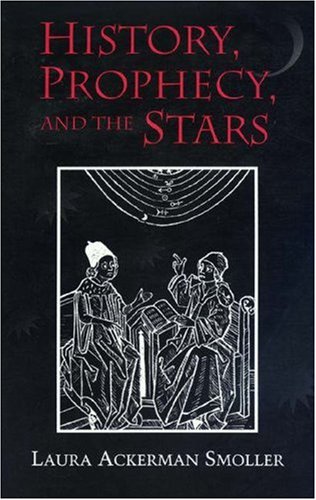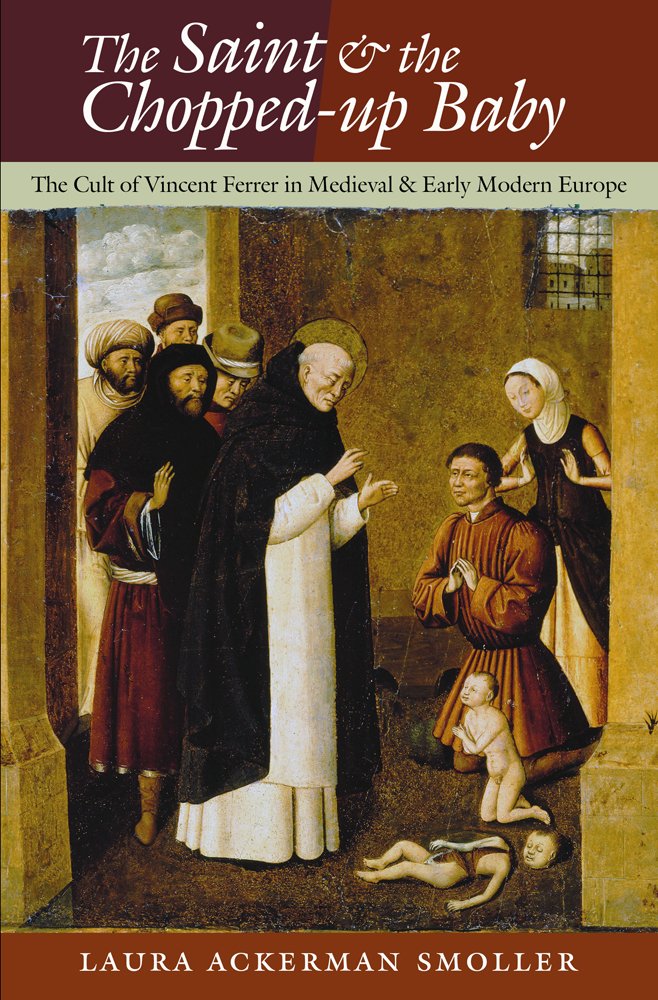
Laura Ackerman Smoller
Arthur R. Miller Professor of History
Professor of History
PhD, Harvard, 1991
- Office Location
- 369A Rush Rhees Library
Office Hours: On leave for academic year 2026
Research Overview
Interests: Medieval and Renaissance Europe; Medieval Christianity; Early Science and Medicine; History of Astrology and Prophecy
My research has focused on areas of intersection between magic, science, and religion in medieval and Renaissance Europe, centering around two major themes: astrology and apocalyptic prophecy, and saints and miracles. My first book, History, Prophecy, and the Stars: The Christian Astrology of Pierre d’Ailly, 1350-1420 (Princeton: Princeton University Press, 1994), explores a French cardinal’s use of astrology to investigate the time of the world’s End. I argue that d’Ailly, worried about intractable papal Schism and hoping that a church council could bring the crisis to an end, turned to astrology as a way to silence the numerous forces that saw the Great Schism as a preamble to Antichrist’s reign and thus, by implication, incapable of resolution by human efforts. In 2014, I published a second monograph: The Saint and the Chopped-Up Baby: The Cult of Vincent Ferrer in Medieval and Early Modern Europe (Ithaca: Cornell University Press, 2014), winner of the 2016 La corónica International Book Award. Here I study the canonization and cult of the Valencian friar Vincent Ferrer, a fiery apocalyptic preacher of the Schism years who died in 1419 and was canonized in 1455, tracing the various meanings of the saint from the moment of his death in Brittany to his appropriation by Dominican friars in Spain’s New World colonies.
More recently, I have returned to the interrelationships between astrology and prophecy in a new book project, tentatively titled “Astrology and the Sibyls,” an investigation of ways of knowing the future ranging from around 1100 to around 1600, research supported by a fellowship from the National Endowment for the Humanities in 2022-23. In addition, I have been exploring the connections between sanctity, mendicant reform, and tales of the demonic in a series of papers, articles, and book chapters focusing on the cults of Vincent Ferrer and Bernardino of Siena.
I offer the following fields for the PhD qualifying examination. For explanations of fields, see the "Program Formulation" page in the Graduate Handbook.
Medieval Europe; Magic and the occult in pre-modern Europe; Medieval Christian cultures; Prophecy and apocalyptic thought in medieval and Renaissance Europe
Graduate Research Fields
I offer the following fields for graduate research: Medieval Europe; Magic and the occult in pre-modern Europe; Medieval Christian cultures; Prophecy and apocalyptic thought in medieval and Renaissance Europe. For more information on our MA and PhD programs, see our graduate program page.
I am accepting new graduate student advisees for our MA and PhD programs.
Courses Offered (subject to change)
- HIST 119: The Black Death
- HIST 122: Medieval Europe
- HIST 185: History of the Future
- HIST 187: Science, Magic, and the Occult: Antiquity to Newton
- HIST 200: Gateway to History: Deviants in Medieval Europe
- HIST 289: Visionaries, Mystics, and Saints in Medieval and Renaissance Europe
- HIST 382: Apocalypse Now...and Then: A History of Apocalyptic Thought
- HIST 383w: Disease and Society from Antiquity to the Present
Selected Publication Covers


Selected Publications
- “Writing Microhistory from the Canonizations of Bernardino of Siena and Vincent Ferrer.” In Canonization Processes (Brill’s Companions to the Christian Tradition). Edited by Sari Katajala-Peltomaa (Leiden: Brill, 2025), 197-216.
- “Sharing a Bed with Dominic: Celibacy and Masculinity in the Cult of St. Vincent Ferrer.” In Masculinities and Representation: The Eroticized Male in Early Modern Italy and England, ed. Konrad Eisenbichler (Toronto: University of Toronto Press, 2024), 77-96.
- “Reading the End in Late Medieval Augsburg: Wolfgang Aytinger’s Commentary on the Revelationes of Pseudo-Methodius.” In Apocalyptic Cultures in Medieval and Renaissance Europe: Politics and Prophecy, ed. Jay Rubenstein and Robert Bast, ISMAR 3 (Tournhout: Brepols, 2024), 195-217.
- “Looking for the End in Late Medieval Germany: Wolfgang Aytinger’s 1496 Commentary on Pseudo-Methodius.” In Édouard Mehl and Christian Trottmann, eds., Histoire de la fin des temps. Les mutations du discours eschatologique: Moyen Âge, Renaissance, Temps modernes, 335-60 (Strasbourg: Presses universitaires de Strasbourg, 2022).
- “From ‘Real Life’ to Saint’s Life: Biography and Hagiography in the Vitae of Bernardino of Siena and Vincent Ferrer,” in Samantha Kahn Herrick, ed., Hagiography and the History of Latin Christendom, 500-1500 (Leiden and Boston: Brill, 2020), 33-51.
- “The Beginnings of Popular Devotion to St. Vincent Ferrer,” in A. Esponera and M. Navarro, eds., San Vicente Ferrer, mensajero del Ayer y hoy, Actas del XVIII Simposio de Teología Histórica, 131-55 (Valencia: Facultad de Teología San Vicente Ferrer, 2020). Evangelio
- “1789 and All That: The Afterlife of Pierre d’Ailly’s Prediction of the Advent of Antichrist,” in Jean-Patrice Boudet, Monica Brînzei, Fabrice Delivré, Hélène Millet, Jacques Verger, and Michel Zink, eds., Pierre d’Ailly, un esprit universel à l’aube du XVe siècle (Acts du colloque du 2-3 mars 2017), 301-20 (Paris: Académie des Inscriptions et Belles-Lettres, 2019).
- “Dominicans and Demons: Possession, Temptation, and Reform in the Cult of Vincent Ferrer,” Speculum 93/4 (2018): 1010-47.
- The Saint and the Chopped-Up Baby: The Cult of Vincent Ferrer in Medieval and Early Modern Europe. Ithaca, NY: Cornell University Press, 2014. Winner of the 2016 La corónica International Book Award.
- “Teste Albumasare cum Sibylla: Astrology and the Sibyls in Medieval Europe.” Studies in History and Philosophy of Biological and Biomedical Sciences 41 (2010): 76-89.
- History, Prophecy, and the Stars: The Christian Astrology of Pierre d'Ailly, 1350-1420. Princeton, NJ: Princeton University Press, 1994.
Honors, Grants, and Prizes
- Fellow, Medieval Academy of America, inducted March 2022
- National Endowment for the Humanities, Fellowship, 2022-23
- La corónica International Book Award (for The Saint and the Chopped-Up Baby: The Cult of Vincent Ferrer in Medieval and Early Modern Europe), 2016
- John Simon Guggenheim Memorial Foundation, Fellowship, 2004-05
- National Endowment for the Humanities, Summer Stipend, 2004
- Member of research group, “Knowledge and Belief,” Max Planck Institute for the History of Science, Berlin, 2003-05
